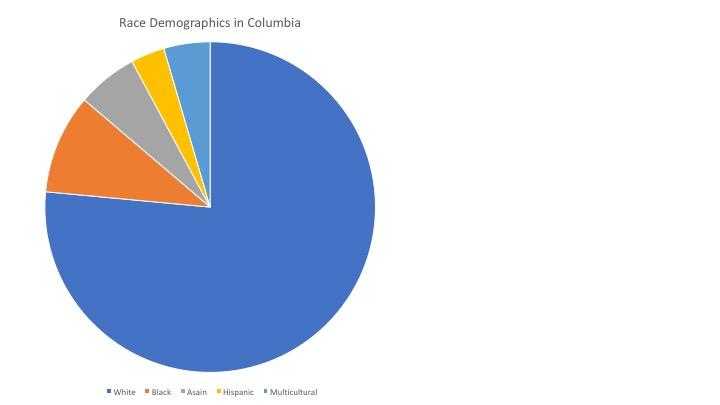
An MU professor released a new study outlining that racial disparities in Columbia vehicle stops should not be attributed to racial profiling, at least in recent years.
In 2016, 9.7 percent of Columbia’s population was black. However, they made up 31.2 percent of the vehicle stops made in the same year. A glance at these statistics from an outsider may appear to show racial discrimination, but Jeffrey Milyo, an MU economics professor, argues this is not necessarily the case.
Milyo published his study “Driving While Black in Columbia” earlier last month. In it he outlines the difference between racial disparities and racial profiling in terms of law enforcement. While there may be a difference in the percentage a group is pulled over and their population in the community, this does not inherently mean there is racial profiling within the police force.
Milyo said he decided to do the analysis on Columbia’s Vehicle Stop Report data because the topic has been pertinent to the classes he teaches. He has been a professor for political economics, law and economics and health economics. Milyo said he talks about the concept of racial disparities and analyzing vehicle stop data in his lectures.
“This was something that I did just because it seemed like there was a public need for it,” Milyo said. “I viewed it as an extension of my teaching role. I did it as a community service.”
Milyo used the Veil of Darkness test, which has been used in various cities around the country to investigate for racial profiling. This test examines the difference in vehicle stops of a certain population between nighttime and daytime. The Veil of Darkness test assumes that driver population and enforcement patterns are the same throughout the day and night. The idea is that the law enforcement official cannot distinguish race of the driver during darkness, so racial profiling that occurs is more likely to be done in the daytime.
The Veil of Darkness method uses a mathematical equation to determine the likelihood that a stopped motorist is black. In Milyo’s analysis of Columbia’s vehicle stop report data, he found that both the periods of 2014-2015 and 2016-2017 show a potential for racial profiling, but the probabilities are not statistically significant (a .052 and .001 probability, respectively).
The insignificant difference between daytime and nighttime vehicle stops raises a new question: What can account for the disparity between Columbia’s black population and the vehicle stop rates?
Milyo said vehicle stop disparities can come from a variety of sources, with one of which being racial profiling. Disparities in the criminal justice system can somewhat be accounted for in income, health and educational differences between different groups of people, according to Milyo.
Though there appears to be no systemic racial discrimination during vehicle stops by the Columbia Police Department, the law enforcement agency has still acted for many years to bring awareness of this issue to their officers.
Steps within the Columbia Police Department have been taken to address racial disparities in vehicle stops. In 2014, all Columbia police officers were equipped with body cameras that are required to be in use while interacting with the public. Officers have attended a meeting with the NAACP Community Engagement on Policing, Equity and Civility this year, along with revising their Search and Seizure policy and Bias-Free Policing policy.
Milyo said he would like to see the state vehicle stop reports improve by means of a greater discussion of what population disparities in vehicle stops actually mean.
“It could be improved partly just by the way in which the disparity numbers are talked about in the report, what they do and don’t mean,” Milyo said. “…All this data is being recorded and nothing is being done with it. My hope is that there will be more studies of this sort and a more sophisticated public discussion of racial profiling and disparities.”
_Edited by Morgan Smith | [email protected]_